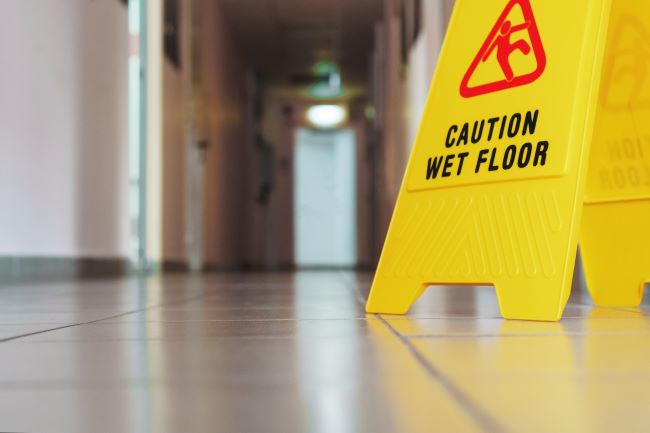By Pat Muller, Ready 2 Respond Trainer
First priority upon arriving at a water damage site: safety! Hazards can include everything from structural instability to electrical shock, with issues like soaked ceiling tiles at risk of collapse or standing water near power outlets. These dangers must be assessed before cleanup efforts begin.
Common hazards
Slips and falls are some of the most frequent safety hazards associated with water damage. Wet surfaces, especially in areas with sloped flooring or steps, increase the risk of falls and related injuries. Flooring materials such as wood, tile, and concrete can become warped or cracked when wet, contributing to safety concerns.
Standing water near outlets, wiring, or electrical appliances may become charged, leading to a dangerous and potentially life-threatening situation. Added moisture can also cause short circuits in electrical equipment, creating a fire hazard.
Additional common hazards include gas leaks, contaminated water, lead and asbestos, microbial growth, and chemical waste from stored items. When the affected area includes hard-to-reach, confined spaces such as attics or underground crawlspaces, this presents an added risk for workers and occupants.
Take action immediately
Once hazards have been identified, act quickly to eliminate them as much as possible, then communicate any remaining dangers:
- Stop the water source, if it hasn’t already been resolved.
- Turn off all electrical power sources to the affected area.
- Block off the affected area and use clear signage to caution about wet floors.
- Provide appropriate personal protective equipment (PPE) to facilities team members handling cleanup.
- Call in an outside contractor to handle issues that require specially licensed personnel (e.g., mold, lead and asbestos, dirty water/sewage).
- Communicate remaining potential safety concerns – and necessary measures to be taken – to all affected parties.
As soon as initial hazards have been identified and addressed, begin the drying process immediately to speed recovery and prevent further damage. Proper drying with airmovers and dehumidifiers will also help reduce the chances of slips and falls, as well as future mold issues. Once remediation begins, additional hazards can arise – so it’s crucial to re-evaluate throughout the process.
The R2R team is available to help incorporate safety procedures and hazard training into your emergency response plan. Follow us on LinkedIn for more facility management tips or subscribe to our Facility Insights newsletter.


Share:
Be Prepared: The Role of SOPs in Emergency Response
Unlocking the Power of Humidity, Airflow, and Temperature